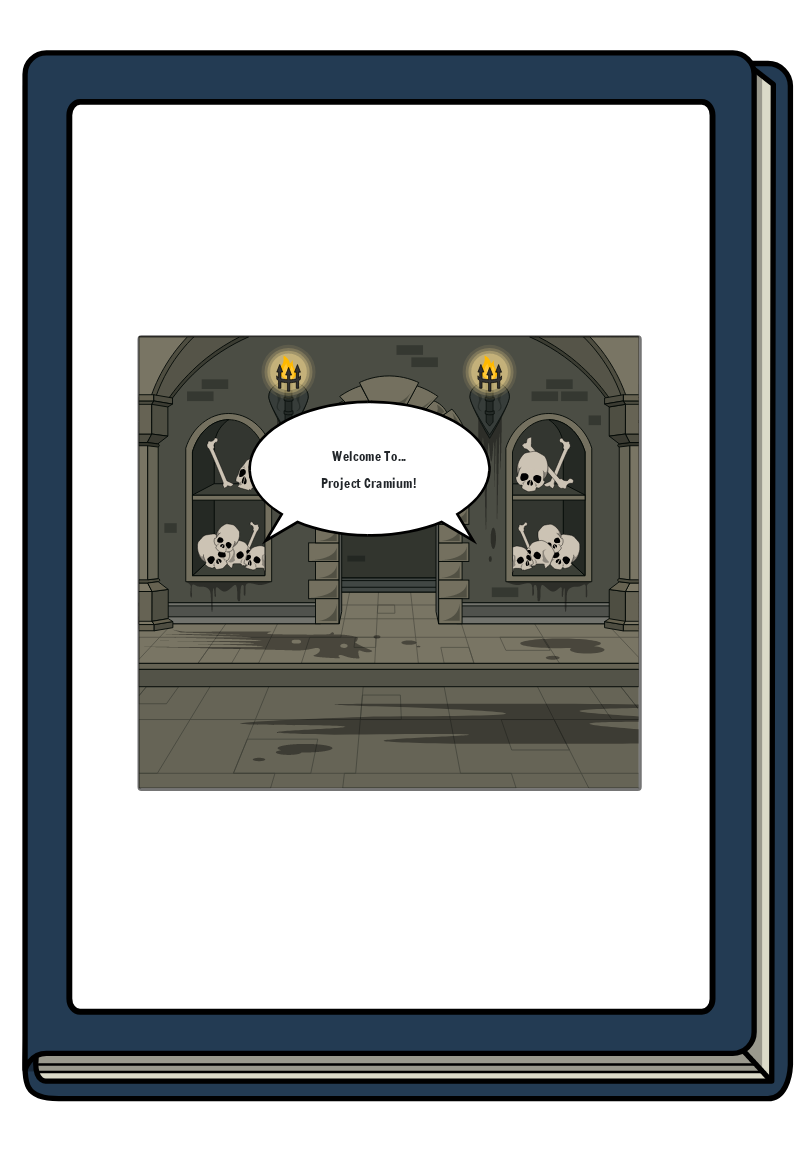Satre-Archaeology Project Book

Storyboard Text
- Welcome To...Project Cramium!
- What is Project Cranium?You've heard of Project Runway, where the best design wins?Project Cranium is a contest of cranial deformation.Let's get started...
- Cranial Deformation is the practice of altering the head’s natural shape through force. There are many different reasons and methods that cause people to deform their heads, and it is done across the world.
- The brain is the most important organ in the human body, so why alter the shape of it's main form of protection? There are many reasons, but the main ones are for beauty, to symbolize rank or status, and a belief it raises intelligence.
- The results of cranial deformation had varying shapes and sizes. Some methods resulted in a completely round skull shape, some were elongated, some high and pointed, some resulted in a round skull with flat sides.These foods show what some of the finished results would have looked like.
- In the Mayan Civilization, there were two different forms of cranial deformation. They were used to indicate rank. People who were destined to hold a higher rank or status were given “oblique deformations” which resulted in a high and pointed head shape. the general population could only have “erect deformation” which resulted in a rounded skull with flattening on the sides.
- In Africa, the Mangbetu stood out to researchers because of their elongated heads. Babies’ heads were wrapped tightly with cloth to give them that appearance.
- The Lucayan of the Bahamas and the Taínos of the Caribbean. They performed fronto-occipital cranial modification. This elongated the skull, and could have either flat or rounded sides
- In Australia, Pleistocene-epoch Australians with flattened occipital bones have been found at Kow Swamp (northern Victoria), Nacurrie (northwest Victoria/southwest New South Wales), and Coobool Creek (southwest New South Wales)
- The Huns applied sustained pressure on babies' skulls shortly after birth to push them in and make them longer, giving them a straight up appearance. The Huns are responsible for a massive revival of the practice in Europe.
- In Japan, cranial deformation was used to show group affiliation and social status. In Tomman island and southwestern Malekula, someone with an elongated head was thought to be more intelligent, be of a higher social status, and was closer to the world of the spirits.
- In Germany, 40 individuals were buried, and of those 40, 9 women showed clear signs of skull deformation and 5 showed ‘intermediate’ elongation. genes show that these women came from distinguished families in Southeaster Europe. Researchers propose they were married to men in Bavaria for political and strategic alliances.
- Until the early 1900s, a form of artificial cranial deformation was still taking place in Western France, in Deux-Sevres. Known as the Toulouse deformity, the practice of bandeau was common amongst the French peasantry. A baby’s head would be tightly bound and padded, to protect it from accidental impacts.
- In Eurasia (Britain, Scandinavia, and Eastern Europe), cranial deformation has been known known since the bronze and intensified during the migration period (4th-7th c AD), which aligned with the Huns arriving. It was a highly visual symbol and played an important role negotiating social identity.
- The methods that were used include customized cradleboards, which are two pieces of wood bound with cloth; wrapping the head with cloth, leather, or textiles; oblique deformations, which result in a high, pointed head shape; upright deformations, which result in a rounded skull shape with flat sides; and fastening boards or pads to the head.
- Still think it is odd? We are still going to extreme measures to modify our bodies. The body modifications taking place today focus on maintaining beauty. Now we see plastic surgery, lip filler, and the use of waist trainers as commonplace, just as cranial deformation used to be.
- The times and the fashions may change, but we all still want to look good, whatever good currently is
- Image Attributions:14310388 (https://www.pexels.com/photo/woman-wearing-sunglasses-and-hoop-earrings-14310388/) - Konstantin Mishchenko - License: Free To Use / No Attribution Required / See https://www.pexels.com/license/ for what is not allowed7558824 (https://www.pexels.com/photo/woman-in-black-and-pink-panty-7558824/) - Daniel Dan - License: Free To Use / No Attribution Required / See https://www.pexels.com/license/ for what is not allowed
Over 30 Million Storyboards Created

